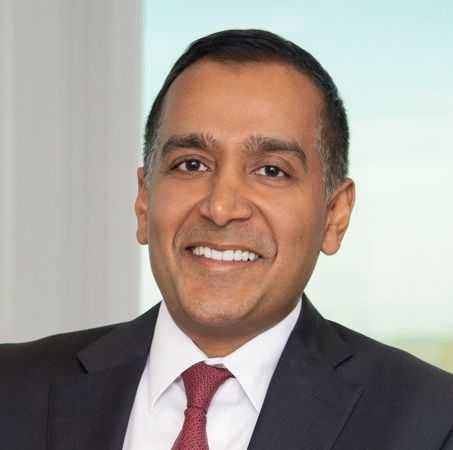News
Article
What Is a Health Plan’s Role in Preventing Homelessness Among Seniors?
Author(s):
The CEO of SCAN Health Plan discusses its first-ever Environmental, Social, and Governance Report.
Last month, the US Supreme Court took up a case that asked whether an Oregon town could fine those who sleep outside when the area lacks enough affordable housing. In March, voters in California—which accounts for a third of the nation’s homeless population—narrowly passed a ballot measure requiring counties to spend funds on housing and drug treatment to combat the problem.
Sachin H. Jain, MD, MBA, FACP | Image credit: LinkedIn

One health plan with roots in Southern California has been working on this challenge for years as the ranks of the unhoused climbed during the pandemic. SCAN Health Plan recently offered its first-ever accounting of how “new models of care and engagement” with those it serves—the Medicare population—are making headway in preventing homelessness among seniors, the group among whom it is rising the fastest.
And yet, while SCAN has a clear mission in this realm, CEO Sachin H. Jain, MD, MBA, FACP, admits to “mixed feelings” as the duty to address “health-related social needs” gets pushed onto health care’s plate.
The ESG Report
SCAN Health Plan’s Environmental, Social, and Governance (ESG) Report speaks to the plan’s origins: the Senior Care Action Network was founded in Long Beach, California, in 1977 by culturally and gender-diverse senior activists unhappy with their ability to access health care and services. Today, under Jain’s leadership, the SCAN Health Plan and SCAN Group has grown to serve 278,000 members in 5 states, from California to Texas.
In an interview, Jain shared how SCAN team members identify programs or services that exist but may have too many hoops for a vulnerable person to jump through alone.
“You would think that, in 2024, we would have figured this out—how do we make it easy for people to access services?” he said. “But of course, on deeper reflection, it's both a feature and a bug of these systems in the sense that I think a lot of people who are turning the crank on operating different programs aren't necessarily interested in making it as easy as possible for people to enroll in these programs and access these programs.”
The ESG report put numbers on many of SCAN’s most compelling initiatives, including $1.4 million for SCAN’s Healthcare in Action (HIA) program, which delivers “street medicine” to homeless older adults, including substance abuse and mental health services. In 2 years, the program has served 4356 people across 6 counties in Southern California, placing more than 250 in temporary or permanent housing.
SCAN also strives to keep seniors living in their own homes and, where possible, avoid nursing home placement. A separate program, Independence at Home, reached more than 450 older adults at high risk of housing insecurity in 2023 and was able to bring housing stability to 92% of those it served.
Who Are These Seniors? How Does SCAN Serve Them?
“Our Independence at Home teams are out in the community building relationships with people, building relationships with senior living facilities,” Jain said. “They're identifying people who are at high risk of potentially losing their homes. They either can't pay their bills, or they have not yet fully accessed all of the social services that are available to them."
“There’s this huge gap that exists in social services; people know that these programs exist, but they don't actually know how to access them,” he continued. SCAN teams identify people who are at risk, 'who have real challenges, real problems' and connect seniors to programs that can address their needs.”
Services offered through Independence at Home include both 1-on-1 and group therapy for older adults starting at age 55, and technology support to help these older adults feel more comfortable using the internet. Is technology a barrier to accessing other services? In some cases, yes, Jain said.
“Anyone turning 65 finds themselves in a really confusing place,” he said. "They've got to register for Social Security, they've got to register for Medicare, they've got to think about a Part D plan, they've got to pay a Part B premium. They've got to think about whether they want to be on Medicare Advantage; if they're not going to a Medicare Advantage, they have to think through a supplement.
“A lot of this is streamlined in some federal systems, and a lot of it isn't. There’s a lot of confusion that's actually created at a time where people really want clarity. And then, you overlay that with people's varying levels of comfort with technology.”
This is not always obvious to those in leadership positions in health care, Jain said.
Keeping care affordable. SCAN achieves its mission in several ways. Besides connecting members with services, it also strives to find savings and deliver care affordably. Steps included in the ESG report include:
- In 2024, the plan introduced “Tier 6,” which makes 13 frequently prescribed, branded drugs available for $0 or $11 per month.
- The SCAN Balance Special Needs Plan allows those with diabetes to have no co-pays for insulin. Other plans let members pay $25 for a 30-day supply of covered insulins at preferred pharmacies or $55 for a 90-day supply.
Should Health Plans Run Point on Social Needs?
Today, health systems across the country are learning to identify and address social determinants of health, or “health-related social needs,” as they are called by CMS. Although this is relatively new for health care generally, it’s not new for SCAN. Due to its mission, “We were at the forefront of the movement to integrate social determinants of health and care,” Jain said. “Before people were talking about social determinants, there were the social HMOs, which integrated food, transportation, and other social determinants of health into a clinical care model. So that's part of the fabric and DNA of our organization.”
But just because some health plans are built to address social needs, should this be assumed for every health plan? Jain says he has “super mixed feelings” on this issue.
“We in health care are trying to patch some of society's broader ills and I think that we have to take a hard look at this,” Jain said. “The fact is, health care struggles delivering health care. And now we're broadening the mandate to deliver other types of services. And I would say we don't deliver health care particularly well—I think there are huge gaps in terms of how we deliver other types of services. I worry about the mandate becoming too broad.”
“A lot of what we call social determinants of health is poverty,” he said. The conversations that need to occur, he said, involve minimum basic income and basic living standards; where Jain lives, rents continue to rise and the price of gasoline tops $7 a gallon, while Social Security benefits fail to keep up. These factors are pushing people out of their homes.
“It feels a little bit like a Dickensian novel—it’s the best of times and the worst of times. We live in this time where GLP-1s are changing diseases; we have new therapies for sickle cell disease and cystic fibrosis and conditions that were previously untreatable when I was in medical school. At the same time, drive down Skid Row in Los Angeles, and you feel like you're not in a third-world country—you’re in a fourth-world country. People are living in absolutely horrible and embarrassing conditions. We have to look at that and say, ‘How do we as a society address it?’ And it's not going to be through a few supplemental benefits in your Medicare Advantage plan.”
A Fit for Managed Care
The concern that health plans may be taking on too much does not mean that managed care cannot be tailored to address the needs of today’s homeless population. SCAN has succeeded here through HIA and by leveraging the Enhanced Care Management system, a feature of California Advancing and Innovating Medi-Cal or CalAIM, a payment reform model of the state’s Medicaid system.
“Managed care and homeless services, even though it doesn't really seem to make sense on the surface actually, are a perfect match for each other,” Jain said. He presented this concept in a paper written jointly for JAMA1 with John Baackes, who is CEO of LA Health Care Plan, and James O’Connell, MD, which made the case that creating a special Medicare model to care for people experiencing homelessness would prevent emergency room visits and stays in the intensive care unit in a more sustainable way than relying on the vagaries of a city budgeting process.
When SCAN medical teams offer medical interventions to people experiencing homelessness under the ECM model, Jain said, “They're providing some of that social care navigation on behalf of the State of California. I think that program has really enabled a lot of innovation and social services. I think we've benefited quite strongly from it.”
Reference
Jain SH, Baackes J, O’Connell JJ. Homeless special needs plans for people experiencing homelessness. JAMA. 2020;323(10):927-928. doi: 10.1001/jama.2019.22376.




